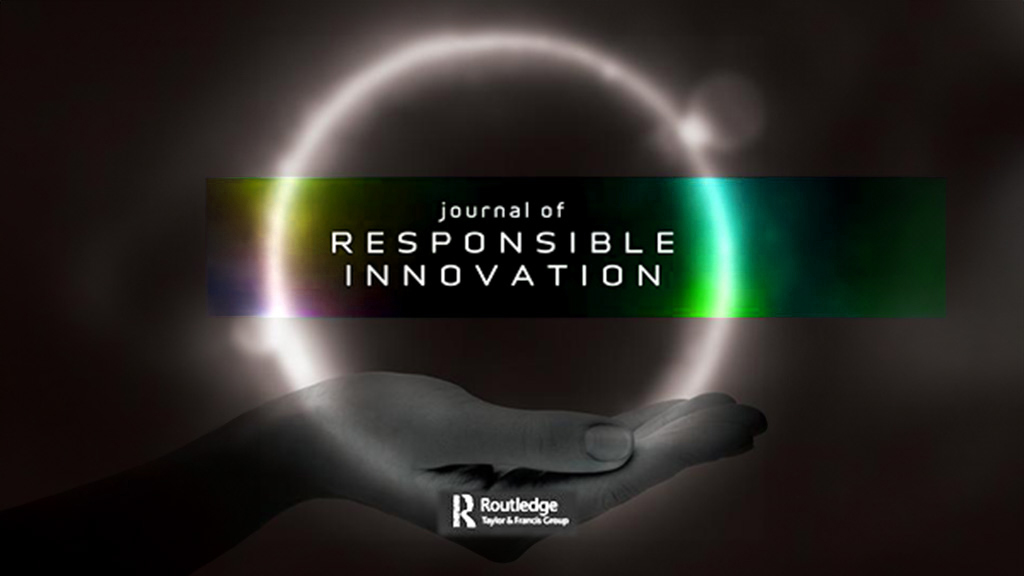As regular readers will know, in 2023 the Journal of Responsible Innovation changed format. Volume 10 was not divided into three issues as those previous, but contributions were added throughout the year. The volume featured several thematic collections, the first of which Engagement of Publics was reviewed here. In this post we take a look at the articles published within the Institutionalising Responsible Innovation in Industry and Other Competitive Environments collection.
In Frames, interests, and incentives – a typology of institutionalizing RRI in the business sector derived from ten pioneering projects, Svetlana Ivanova, Constanze Reichetzer, André Martinuzzi, Florian Findler and Katharina Miko-Schefzig present a qualitative comparative case study of ten EU-funded pioneering projects, deriving a generalized typology.
This publication addresses the scientific debate on institutionalizing RRI by drawing attention to the importance of discursive framings to institutionalize RRI in the business sector. The authors develop and describe a typology that is based on discursive institutional theory in order to provide the foundations of effective institutionalization strategies for future research and innovation projects.
The article poses the question ‘how did EU funded pioneer projects apply discursive frames, address potentially conflicting interests and utilize incentive mechanisms for institutionalizing RRI in the business sector?’ 10 EU sponsored projects (Including our own SMART-map collaboration) are taken as case studies and placed into 3 project typologies: Regional level, corporate level, and process level projects.
A discussion section presents findings through the lens of this classification before a conclusion with recommendations closes the article.
Framings of innovation, responsibility, and responsible innovation in China: insights from a case study undertaken with Chinese businesses is written by Fujia Li, Richard Owen and Gareth Shaw. The authors present an empirical study that suggests that ‘framings of innovation and responsibility are underpinned by a mixture of logics and institutional entrenchments that are heavily influenced by the norms, policies, and ideology of the State’, which in turn shapes perceptions of RI.
After an introduction, the authors offer a synthesis of RI’s emerging presence within China’s academic and policy circles. The article then focuses on findings, the authors describing an overarching framing of de-facto responsible innovation that can be constructed around three aggregate themes: originality and novelty, business orientation, and a pro-innovation culture, before moving on to the sense-making procedure of first encounters with the term Responsible Innovation.
The article closes with a discussion and short conclusion.
In Responsible innovation as transformational entrepreneurship by disabled people, Eva Kašperová and Audley Genus use a critical realist-informed methodological approach to examine how comparatively ordinary innovations arising in a ‘bottom-up’ manner can respond more inclusively to otherwise overlooked societal needs.
Comparing RI with transformational entrepreneurship (TE), the authors describe how the widely accepted four dimensions of RI are realized from the ground up through TE by disabled entrepreneurs, generating ‘right’ impacts and outcomes for disabled people and the wider society: transforming inaccessible practices of mainstream organizations; enhancing personal powers of disabled people; and changing mainstream societal attitudes towards disability.
The article is written in a flowing narrative style. Many of the case studies described relate to individuals who have become disabled in later life, an experience that leads them into developing businesses whose aims are to support people with similar experiences to their own. The narrative leads to some criticism of what we might think of as accepted RI aims, pushing the reader to think about the idea of scale in current RI discussion.
In Responsible innovation ecosystem governance: socio-technical integration research for systemslevel capacity building, Mareike Smolka and Stefan Böschen introduce questions around the possible use of STIR methodology for adjusting engagement methods to the governance of innovation ecosystems.
The authors focus on reflexive governance, proposing three methodological adaptations of STIR for their approach: (1) rethinking the role of the embedded humanist through the concept of the engagement agent, (2) incorporating multi-stream engagement in midstream modulation, and (3) embedding STIR in a multi-method research design to shift from a focus on individual experts to networked responsibility among stakeholders.
The article concludes with three recommendations: to implement R(R)I engagement methods in open innovation ecosystems marked by fuzzy and evolving boundaries (process-oriented stakeholder analysis complemented with patchwork ethnography can help trace the boundary-work in and around the system); to enhance mutual learning among the actors within an innovation ecosystem (with workshops serving as bridging events); the effects of engagement need to be subject to monitoring, documentation, and evaluation.
Responsible research and innovation in innovation value chains: focus on the catalytic role of nongovernmental organizations by Carmine Passavanti, C. Ponsiglione, S. Primario and P. Rippa explores the role of NGOs in Innovation Value Chains and Responsible Research and Innovation, asking how NGOs enhance the diffusion of RRI practices in IVCs networks and ensure better performance in knowledge dissemination and inclusiveness within innovation networks.
The authors use an agent-based modeling and simulation approach developed within the I AM RRI project, evaluating the performance of the innovation ecosystem through three main indicators: RRI spreading, heterogeneity of innovative networks and knowledge dissemination.
A discussion and conclusion section containing several recommendations close the paper.
The Institutionalising Responsible Innovation in Industry and Other Competitive Environments focus also contains a perspective piece. In From a land ‘down under’: the potential role of responsible innovation as practice during the bottom-up development of mission arenas in Australia, Simon J. Fielke, Justine Lacey, Emma Jakku, Janelle Allison, Cara Stitzlein, Katie Ricketts, Andy Hall and Alexander Cooke integrate theories of responsible innovation with the nascent development of the concept of mission-oriented innovation to address wicked socio-institutional challenges.
The article narrates knowledge gained during and around the authors’ experiences of developing a course entitled ‘Building Capacity for Responsible Innovation: Agri-Technology’. Among a host of other points, they summarize three of particular importance: existing interactions within innovation systems matter; temporality matters; and cumulative learning can be directed over cycles of innovation investment.
All of these articles are available to download from the journal website or directly through the links above.
















